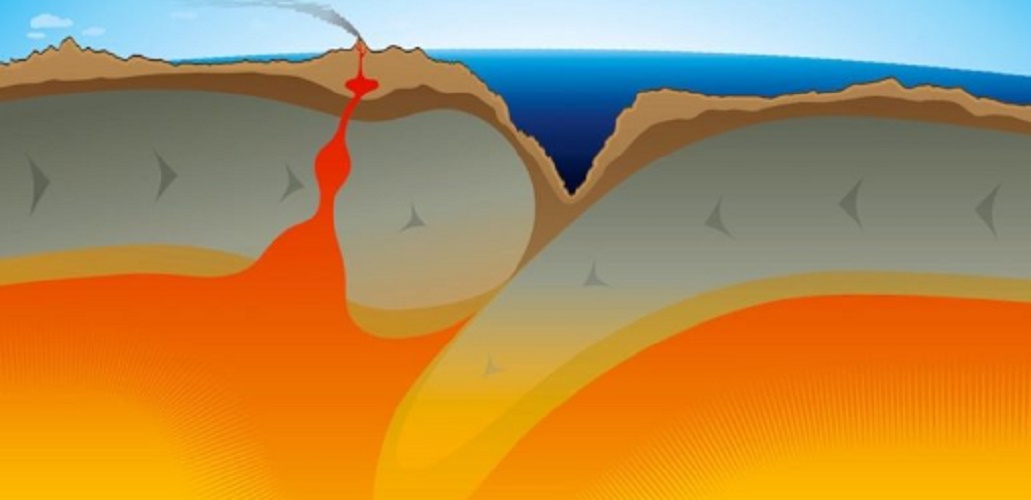What is continental drift?
We explain what continental drift is, who devised the theory and what evidence exists today. Also, what is plate tectonics.
-
What is continental drift?
Continental drift is the gradual but constant displacement of the different continental masses of planet Earth with respect to the others, moving away or approaching in a cycle of millions of years.
It is due to the viscous and semi-solid nature of the earth’s layer underlying the surface lithosphere . On it float the different tectonic plates , pushing and moving reciprocally, like carpets on a waxed floor.
The current location of the continents is different from that suggested by the geological evidence of the fossil record. As an explanation for this difference, the continental drift theory was proposed in 1912 by the German geophysicist Alfred Wegener (1880-1930).
At the time the theory was received with skepticism by the geological community of the moment. However, in the 1960s, with the understanding of tectonic plates, the continental movement could be explained more adequately.
On the other hand, the idea that the shape of the continents fits together as puzzle pieces is not new. In the 19th century the German naturalist Alexander von Humboldt had already theorized about it.
About 50 years later, the French scientist Antonio Snider-Pellegrini concluded that the presence of the same fossil evidence on the coasts of continents as far away as Africa and America had only one explanation: that they had once been communicated, either physically or through land bridges that were now submerged.
The first complete explanation of this phenomenon came with Wegener, as well as the name of the supercontinent that all the current ones formed together: Pangea (from the Greek bread , “everything”, and gea , “earth”).
-
Evidence of continental drift
There are numerous tests of continental drift, such as:
- The coincidence of the forms of the different continents , observable in a world map, and that is even greater if the limits of the continental platforms are observed.
- There is geological evidence of the proximity of the continents, since many rock or mountain formations have the same age and the same type of stones (evidence of the same type of metamorphic processes) on remote and different continents today.
- The presence of fossils of plants and animals on the coasts of continents today separated, it is perfectly explained if the continents were closer before.
- Paleoclimatic analyzes that use subsoil rocks to determine the ancient climate of some regions of the earth’s surface are meaningless in a continental distribution like the current one. On the other hand, in a unified continent they are perfectly possible.
-
Stages of continental drift
Pangea was not the first supercontinent. Before there were others, which separated into pieces from which other supercontinents were formed, and so on until today. This process can be summarized in broad strokes in the following stages:
- About 1100 million years ago , Rodinia’s supercontinent was formed, the first large block of land from which all continents come. The possibility that there were some previous continents is not ruled out, but there is not enough evidence to confirm it.
- About 750 million years ago , Rodinia began to fragment and a new supercontinent emerged from its remains.
- About 600 million years ago , said second supercontinent, called Pannotia, which had a relatively short life of 60 million years.
- About 540 million years ago , Pannotia fragmented into two smaller supercontinents: Gondwana, to the south, composed of what is now Africa, South America, India, Oceania, Madagascar and Antarctica; and Proto-Laurasia, to the north, composed of Asia, Europe and North America. Between them a new ocean formed: proto-Tethys.
- About 500 million years ago , proto-Laurasia was divided into three new continents: Laurentia, Siberia and Baltic, allowing the creation of two new oceans : Iapetus and Khanty.
- Some 485 million years ago , in the Ordovician period, a microcontinent separated from Gondwana: Avalonia, corresponding to the current United States, Nova Scotia and England, and began its journey north, until joining Laurentia. Thus, Baltic, Laurentia and Avalonia collided to form Euramérica.
- About 440 million years ago , Gondwana began a slow displacement from the south that led it to collide with Eurasia, losing along the way the microcontinents of North China and South China, which took their own course. Just like them, other fragments detached and gathered in new locations, as the oceans closed and the continents approached again.
- About 300 million years ago , during the Permian period, there were already only two major continents: Siberia and Pangea, close to each other, and surrounded by a single ocean: Panthalassa.
- About 251 million years ago , in the Triassic period, there was a great marine recession and the rise of the emerging lands, together with the continental drift, unified the continents in Pangea, a gigantic C-shaped supercontinent, with the sea of Tethys inside.
-
Continental drift and plate tectonics

Today, Wegener’s theory constitutes an ancestor of what we understand as plate tectonics , a concept in which it is also included. The latter was formulated in 1960 by the studies of Robert Dietz, Bruce C. Heezen, Marie Tharp, Harry Hess, Maurice Ewing, Tuzo Wilson and others.
Plate tectonics explains the movement of the continents in the convection of the mantle of planet Earth , whose movements constantly reconfigure the upper and rigid layer, the lithosphere.
In this way, both the continental drift and the expansion of the ocean floor are the result of a long process, billions of years old, that mobilizes and confronts the fixed plates of the earth’s crust (tectonic plates), which can therefore present deformations, giving rise to the birth of the relief .




